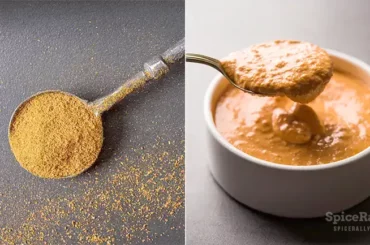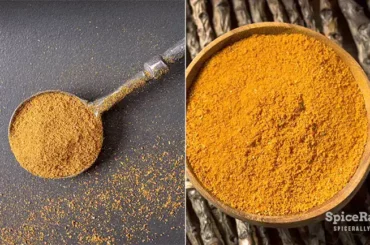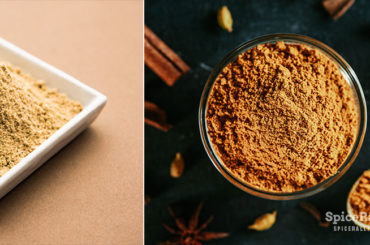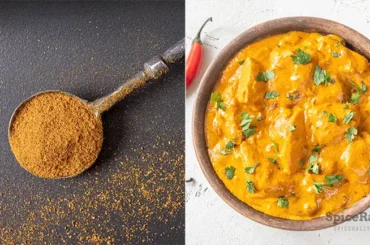Italian seasoning and Herbes de Provence are well-known flavor enhancers used for a wide variety of dishes. But how do they differ? Hence, this episode will tackle every aspect of Herbes de Provence vs Italian seasoning.
Although both blends consist of similar herbs, their contents are still different. While Herbes de Provence includes ingredients like tarragon and savory in the traditional recipe, Italian seasoning does not contain them authentically. In addition, most American versions of Herbes de Provence have lavender flowers, which are not usually used in Italian seasoning.
You need to learn more differences between these two if you are a real fan of them both! So, continue reading as we have explained more in the rest of our article.
Herbes de Provence Vs Italian Seasoning- Difference Explained.
At a glance, Italian seasoning and Herbes de Provence look alike, so most of us tend to get confused. As mentioned previously, both consist of some similar ingredients. But still, their traditional recipes have slight differences.

Oregano, rosemary, thyme, tarragon, marjoram, savory, and basil are the core ingredients in the authentic Herbes de Provence mix, while Italian seasoning contains the same set of herbs except for tarragon and savory.
Moreover, Italian seasoning often has sage. While on the contrary, sage is generally an optional ingredient in Herbes de Provence. In addition, some Italian seasoning recipes even include other flavorings like garlic powder, salt, black pepper, etc., which we don’t usually savor in Herbes de Provence.
Another noticeable difference is the inclusion of lavender in most American Herbes de Provence varieties. We don’t typically see this ingredient in Italian seasoning, and accordingly, their flavor profiles tend to vary significantly.
We have shared a table below for further clarification. So, you can see for yourself in what other ways these two seasonings would differ.
Herbes de Provence Vs Italian Seasoning Comparison
| Herbes de Provence | Italian Seasoning | |
|---|---|---|
| Main Ingredients | – Thyme – Rosemary – Oregano – Marjoram – Basil – Tarragon – Savory | – Thyme – Rosemary – Oregano – Marjoram – Basil – Sage |
| Optional Ingredients | – Lavender flowers (prevalent in American varieties) – Dill – Fennel seeds – Fennel leaves – Chervil – Parsley – Sage – Bay leaves | – Parsley – Savory – Chili flakes – Salt – Black pepper – Garlic powder – Onion powder |
| Base Flavor | Herbal | Herbal |
| Flavor Profile | Earthy, pungent, warm, and slightly sweet. If lavender is included, the flavor gets a bright floral note. | It contains a subtle sweetness and a peppery note with a piney, earthy and pungent bite. |
| Texture | Dry herb mixture | Dry herb mixture |
| Color | Natural green color | Natural green color. But, if optional ingredients like chili flakes are added, it gets a subtle reddish tint. |
| Mode of usage in cooking | As a cooking ingredient | As a cooking ingredient |
| Usages in cooking | – With stews and soups – As a rub or a seasoning in meat and seafood – In sauces, salad dressings, dipping sauces, and vinaigrettes – Mix with pasta, lasagna, noodles, and spaghetti – With vegetables – To be incorporated into ground meat mixtures – With rice, couscous, and quinoa dishes – In making different kinds of bread – To blend into the sandwich and wrap fillings. | – To mix into meatballs, sausages, and burger patties – With pizza – To be incorporated in dips, salad dressings, and vinaigrettes – With pasta, lasagna, and spaghetti – To season meat and seafood – To use in soups and stews – With various vegetable dishes – In savory rice dishes – To blend into sandwiches and wrap fillings. |
| Origin | French cuisine | The origin is a bit controversial. Some sources say this is an American creation, while some say this has originated from Mediterranean cuisine. |
| Availability | – Come in containers or packets – Can be purchased from supermarkets and online shopping sites. | – Come in containers or packets – Can be purchased from supermarkets and online shopping sites. |
| Storage | – Can be stored with other dry spices and herbs. – Should be kept in an air-tight glass container in a cool, dry, dark place | – Can be stored with other dry spices and herbs. – Should be kept in an air-tight glass container in a cool, dry, dark place |
Rounding Off With Herbes de Provence Vs Italian Seasoning…
These two herbal blends have their own way of flavoring your meals, just as you wish. However, despite so many things they share in common, Italian seasoning is way different from Herbes de Provence. Accordingly, the considerable changes come down to their ingredients, flavor, and origins.




